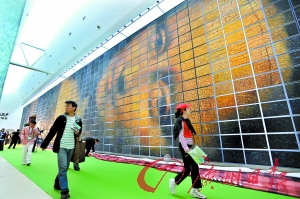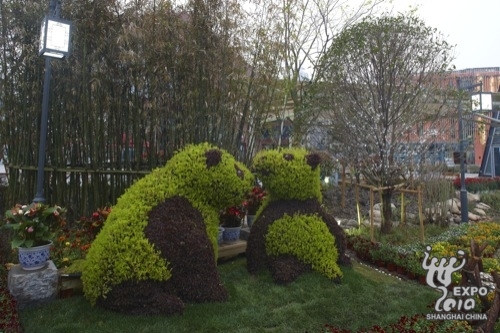Urbanization: Chinese way
Editor's notes: Urbanization creates problems though, it's an unavoidable trend. This series of five stories try to discuss ideal modes for future development of Chinese cities and how people can create better cities in light of the problems faced by them. Following is the second of this series, highlighting four cities which independently participated in the Shanghai World Expo to showcase their solutions to urbanization problems.
Shenzhen: From fishing village to metropolis
With the theme "Shenzhen, Frontier for Chinese Dreams," the Shenzhen Pavilion is shaped like a shipping container. This is appropriate, since the components of the pavilion were shipped over a thousand nautical miles to the Expo Park's Urban Best Practices Area (UBPA).
|
In this series: |
The two-story pavilion features multiple paintings, films, photos and multimedia installations. These combine to tell the story of the transformation of Shenzhen's Dafen Oil Painting Village. The village was turned into a base for the city's art industry. "The Dafen Oil Painting Village is an example of Shenzhen's 30-year development, which can inspire people to think about how to improve the lives of people in urban villages," said Xu Chongguang, vice director of Urban Planning, Land and Resources Commission of Shenzhen.
 |
| Visitors tour the Shenzhen Pavilion |
Chengdu has put a "Living Water Park" on display, helping to clean 15 tons of sewage at the Expo Park every day. The natural water treatment system, which is based on Chengdu's own Living Water Park built in 1998, is a closed system that uses stones and plants, such as reeds and duckweed, to remove harmful organisms from the water.
The entire pavilion is shaped like a fish, with each part of the fish playing a role in treating the water. The "head" of the fish – a slope with an underground sedimentation tank – collects and treats waste water. The treated water then flows down the slope to the "body," which contains plants and fish that clean the water even further. After being oxidized and sterilized, the water moves through cobblestones to the fish's "tail," where a fountain sprays the now-clean water for visitors to enjoy.
In addition to the Living Water Park, Chengdu's Expo exhibit also takes a look at what the Earth might have looked like before it was changed by human civilization.
 |
| The Living Water Park at the Chengdu Pavilion |
 0
0 







Go to Forum >>0 Comments